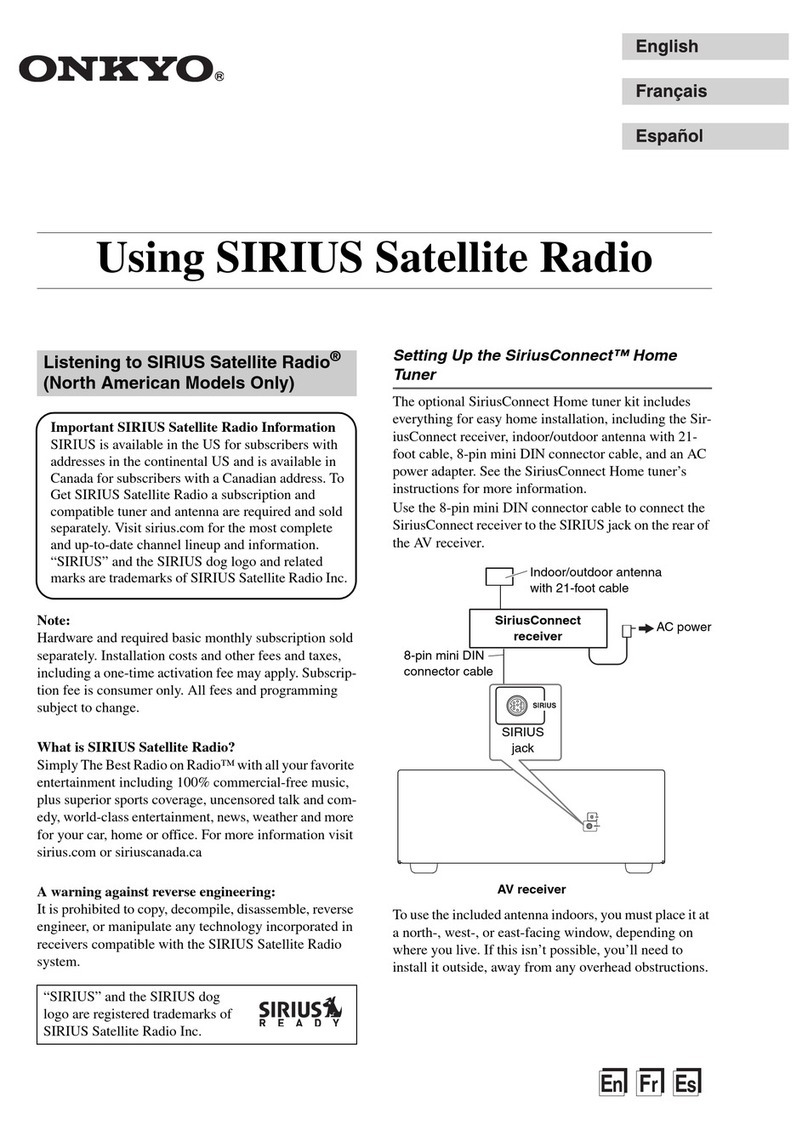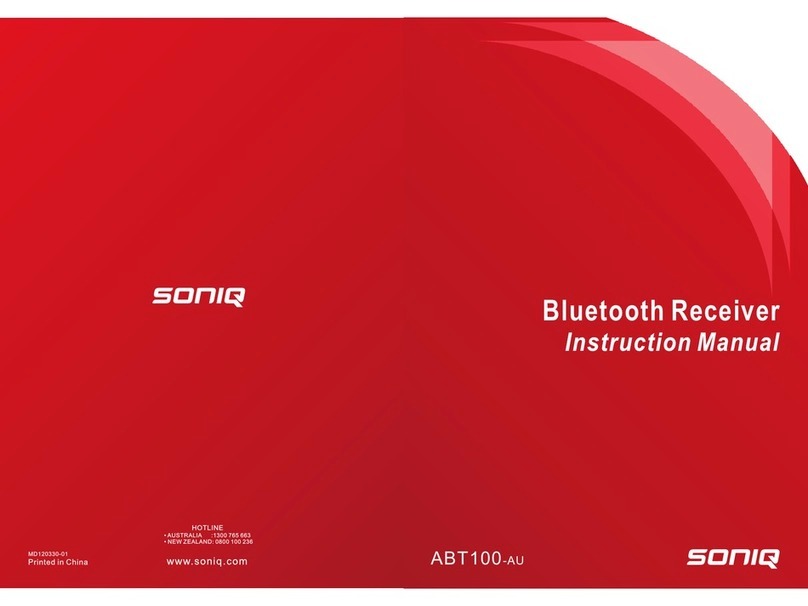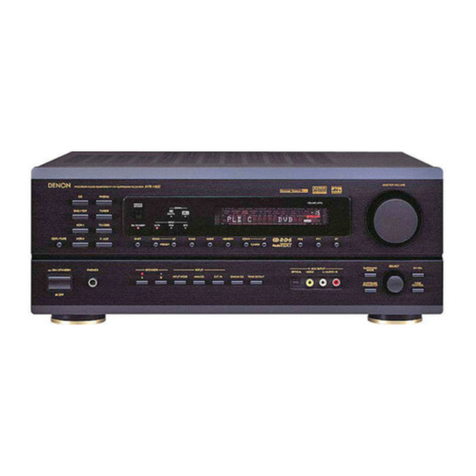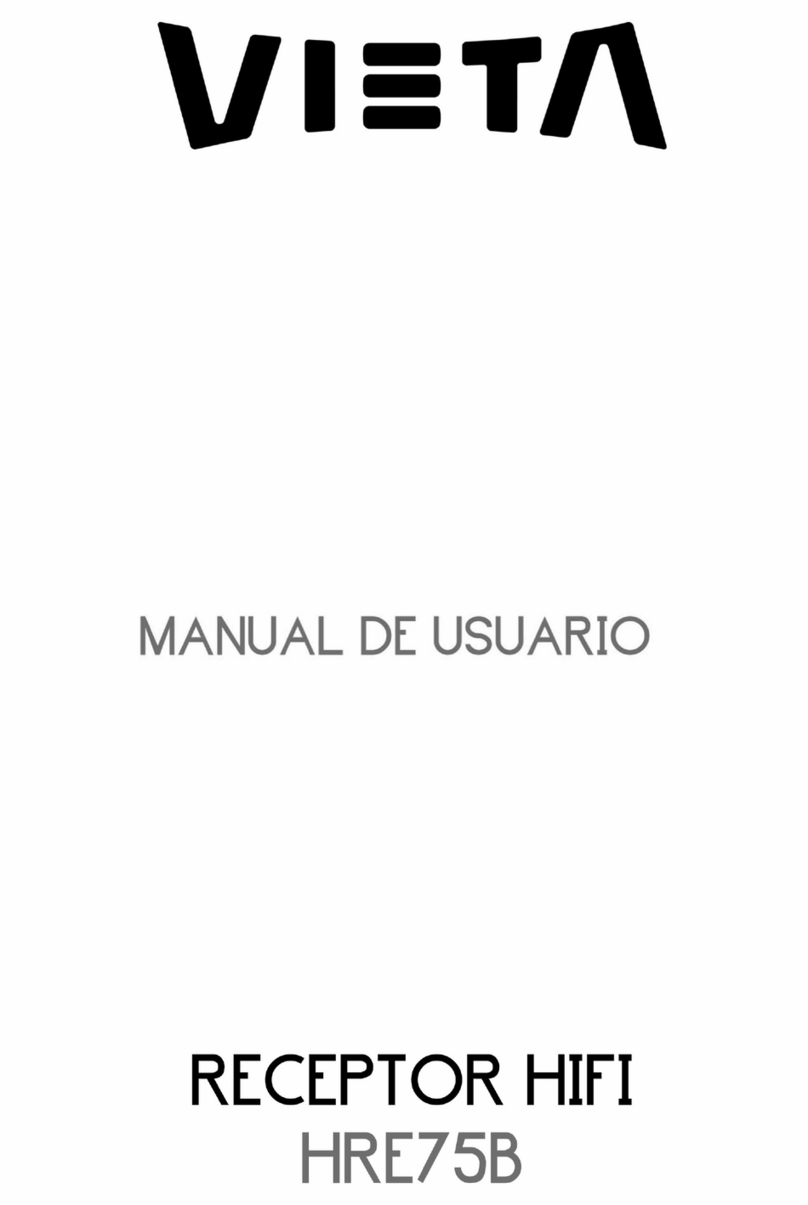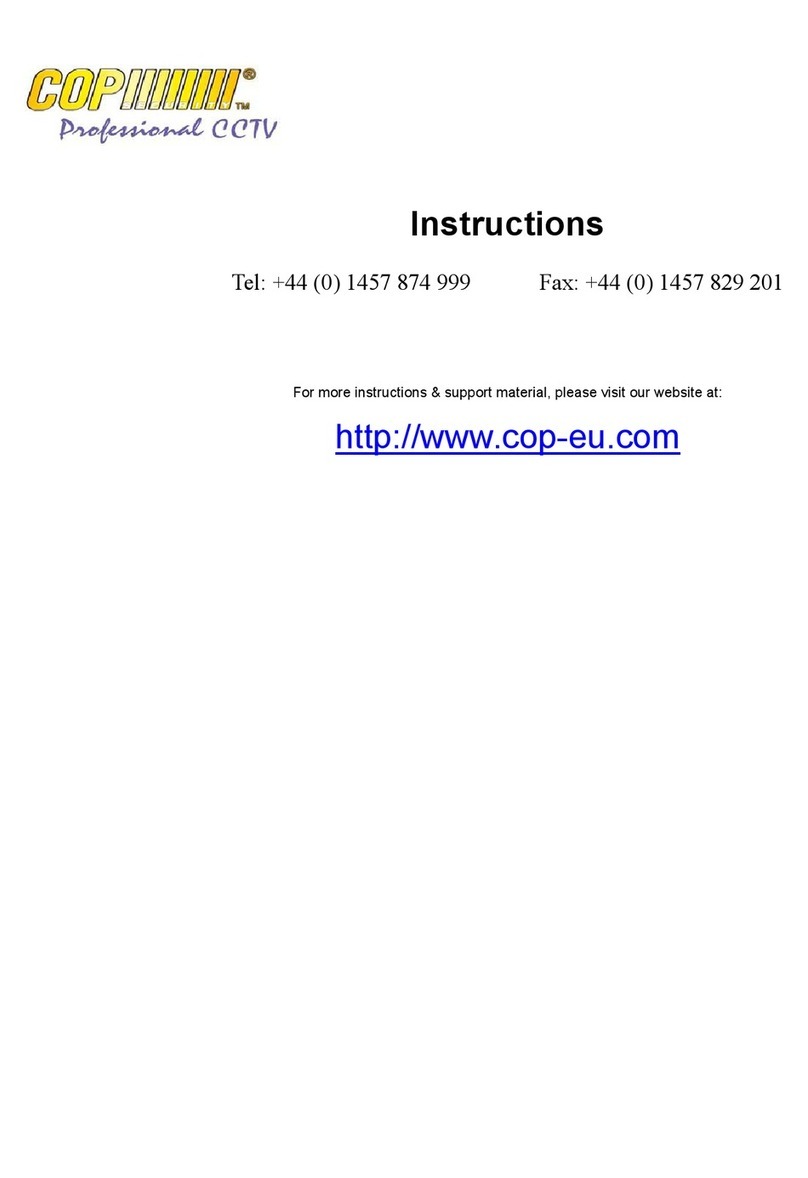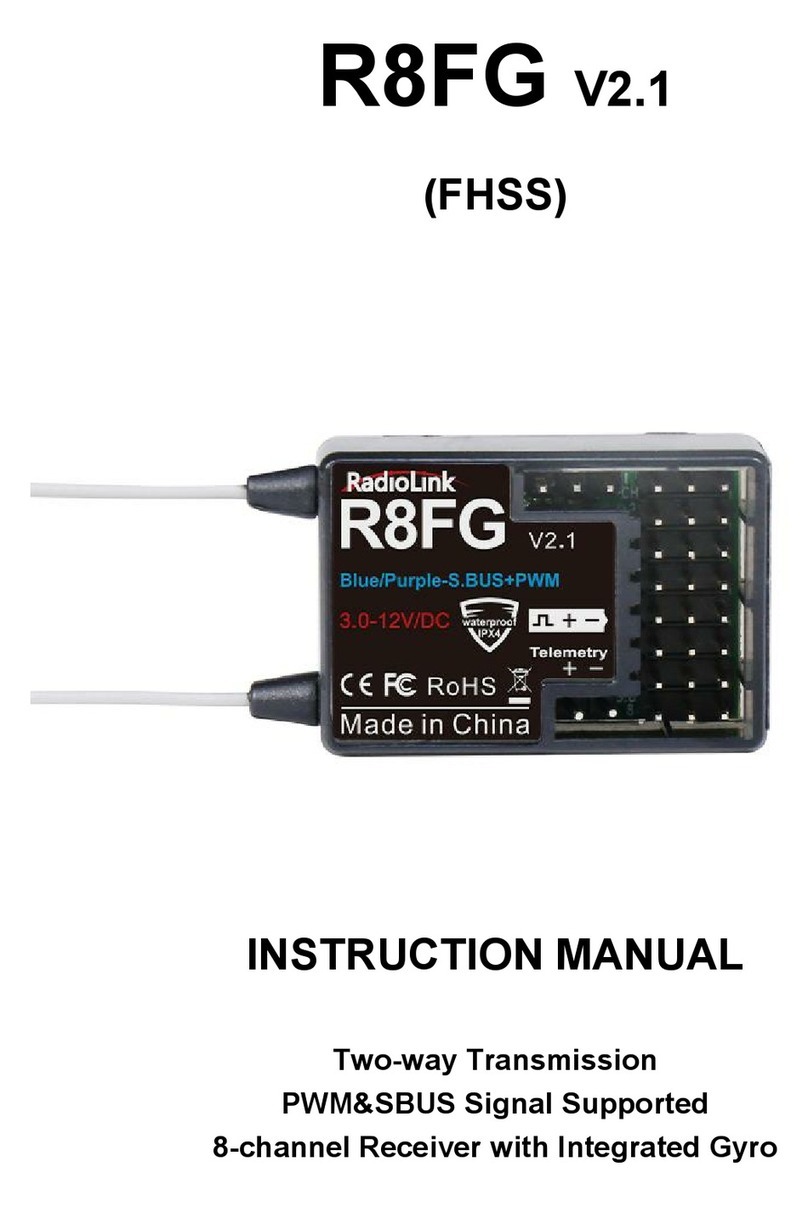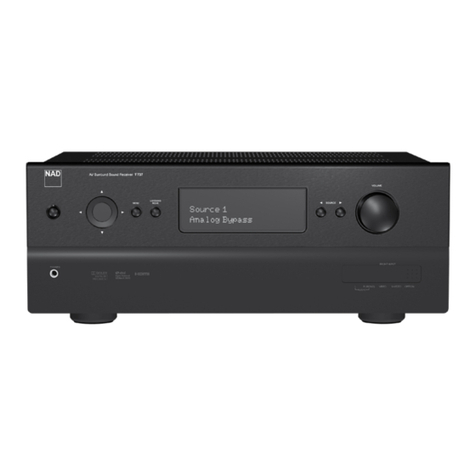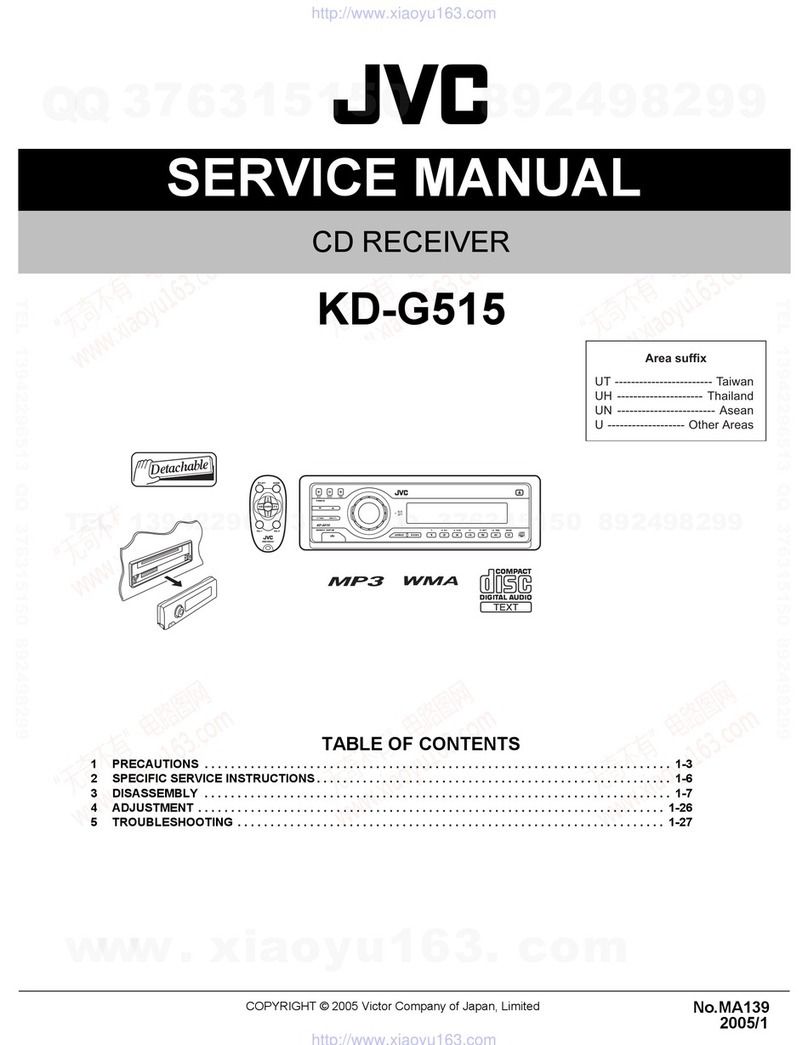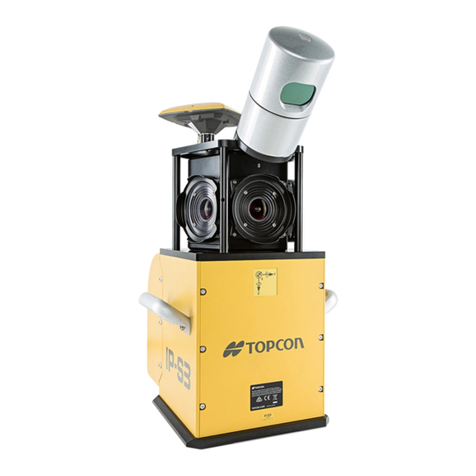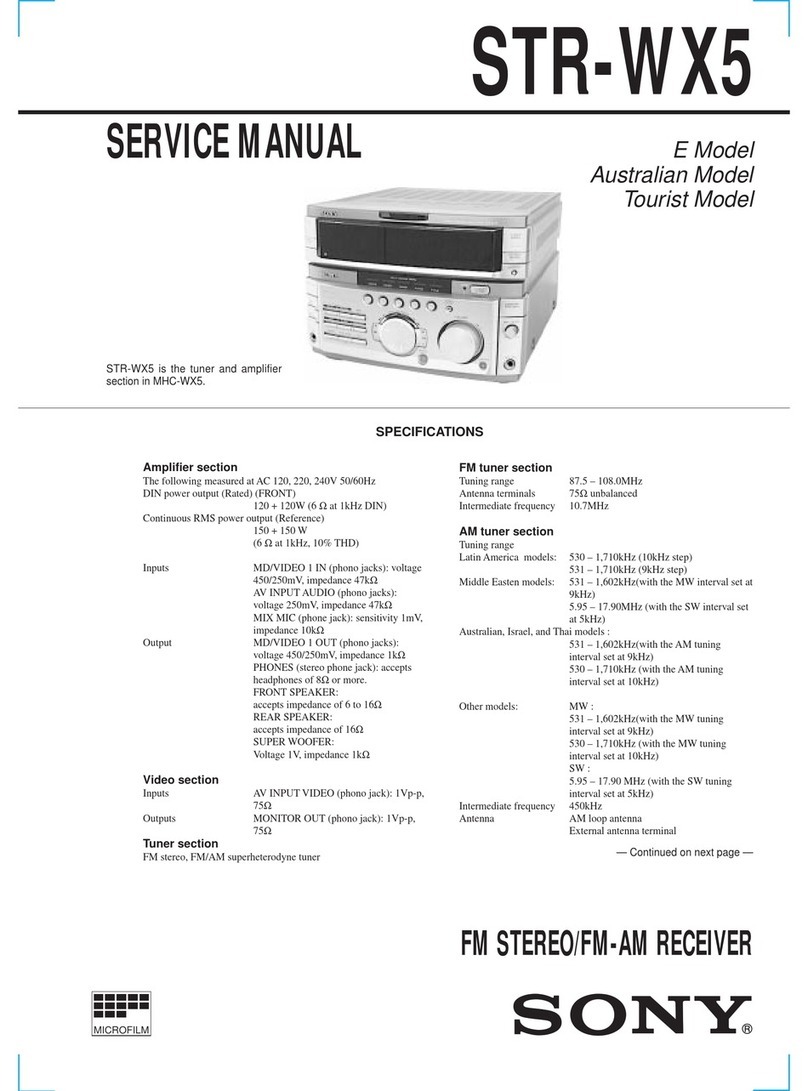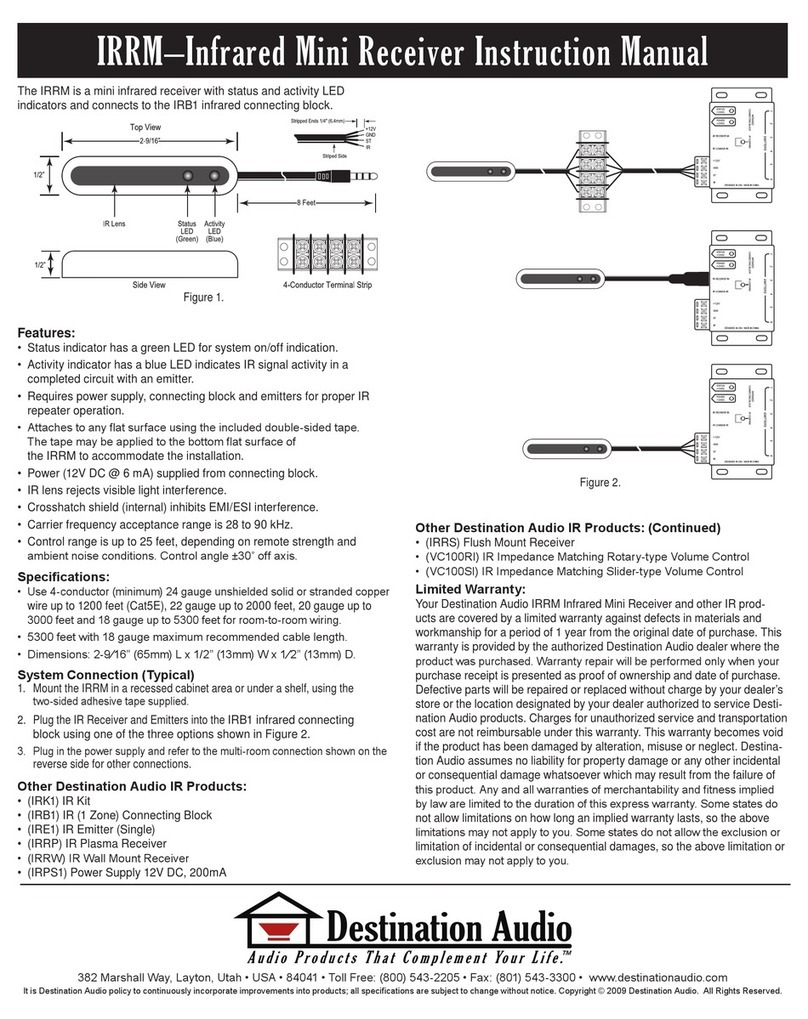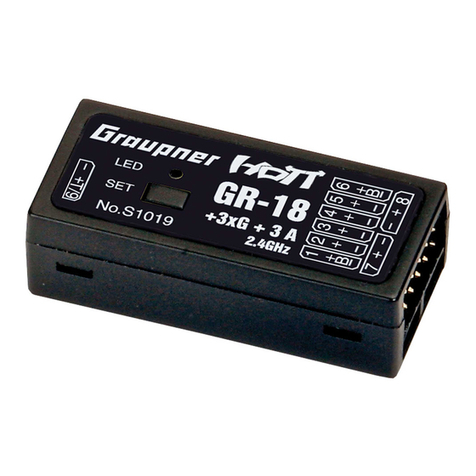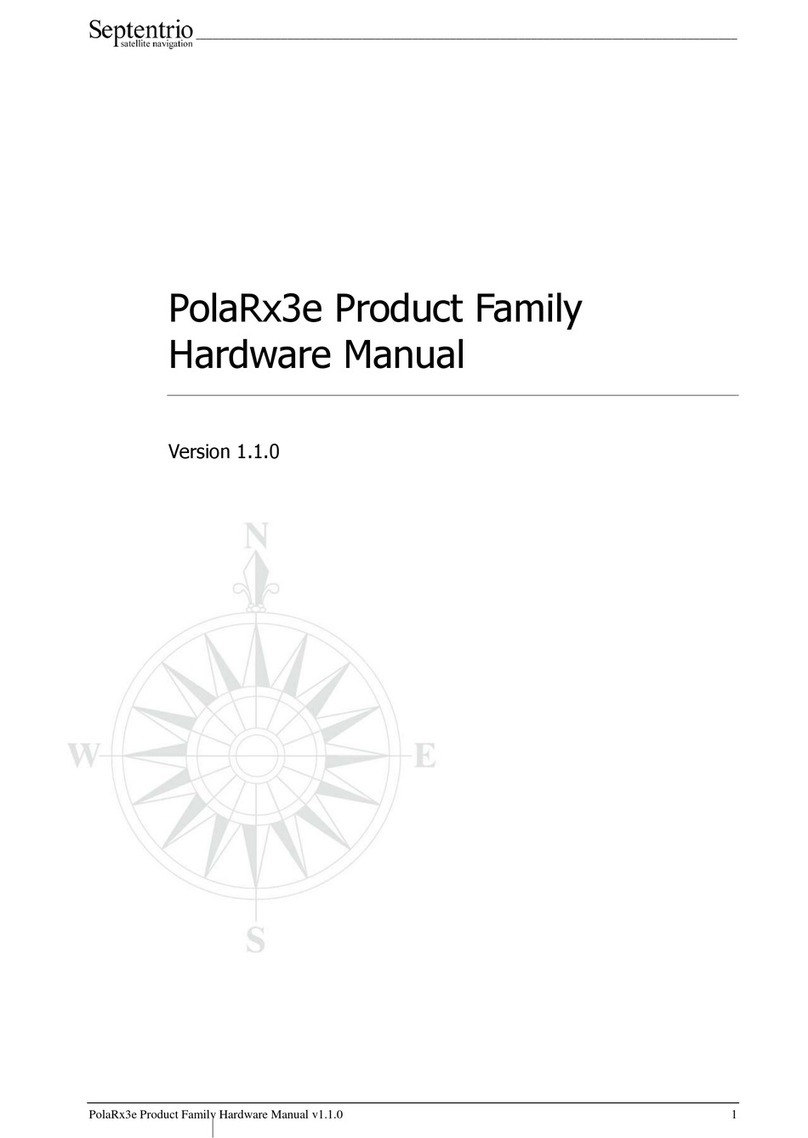AdventistSat Fortec Mercury II User manual

AdventistSat Installation Guide
Satellite System for Reception of Satellite AMC4
Fortec Mercury II
v.6 4.29.2008
Important Notice: Your equipment must be
activated before installation. Please follow the simple
activation process on page 23 of this manual.
Professional Installers:
Quick Install Guide on Pages 34 - 36

Important Installation Notice: The Federal Communications
Commission (FCC) has ruled that local government zoning or
homeowner’s associations may not prevent the installation of
satellite antennas one meter (39”) or smaller in diameter, unless
legitimate safety restrictions such as fire codes are in effect.
For more information: www.fcc.gov/cgb/satellite.html
Important Notice: Your equipment must
be activated before installation. Please follow
the simple activation process on page 23 of this
manual.

www.AdventistSat.com Toll Free 866-552-6882
1
Table of Contents AdventistSat V.101 Page
Parts List 4
Important Safeguards 5
Site Survey 10
Dish Assembly 14
Universal Post Mount Assembly and Install 18
Dish Aiming Angles 20
Connect Receiver and Television 22
Activate Preprogrammed Channels 23
Locate Satellite and Peak Signal Quality 24
Grounding the System 27
Basic Operation 28
Frequently Asked Questions 29
Connection Examples 31
Accessories 32
Limited Warranty 33
Quick Install Guide for Professional Installers 34
Site Check: Elevation Finder Tool 37
Note: Save all original boxes, manuals, accessories
and packaging materials in case it is necessary to return
the merchandise. You have 30 days from the date of
delivery to return the equipment for refund or exchange to
AdventistSat.
Before unpacking or assembly of any item, review the
warranty, exchange and refund policy on page 33 of this
manual.
Please call 866-552-6882 with any questions.
Materials contained in this installation manual are the property of:
AdventistSat.com
8801 Washington Blvd., Suite 101
Roseville, CA 95678
www.adventistsat.com ©2008 AdventistSat.com

©2008 AdventistSat.com
2

www.AdventistSat.com Toll Free 866-552-6882
3
The receiver has a serial number located on the rear panel. Record
the model and serial numbers and retain for your records.
Model Name or Number _____________________________
Serial number _____________________________________
AdventistSat requires that you carefully read through
these pages before beginning the installation.
This guide is intended for an individual experienced in performing
the various tasks described, including:
Determining an antenna location with a view of the satellites positions.
Climbing a ladder and working on your roof.
Observing safe working practices around heights and electrical hazards.
Determining if water pipes, gas lines or wires are hidden before drilling.
Using a power drill to drill holes into your house.
Routing cable through walls, crawl spaces or attics.
Safely lifting and securing the 25 lb. antenna assembly.
Grounding the system as recommended in the National Electric Code.
•
•
•
•
•
•
•
•
NOTE: If you don’t feel completely comfortable with these tasks,
please contact AdventistSat toll free at 866-552-6882 or local 916-
677-6228 for information on having your system installed by a local
installer.
Local installers that are experienced with the installation of Free to
Air satellite equipment are often available and listed in your local
telephone directory Yellow Pages or on our Free Installer Referral
Website http://www.FTAinstall.com. There also may be members
of your local church or community that install these systems as an
outreach.

©2008 AdventistSat.com
4
Reflector (1) LNBF ARM (1) Post (1) Tripod Support Leg (2)
Installation Kit (1)
LNBF (1)
Tools Required
Phillips Screwdriver
Drill and Bits
Hammer
Deluxe AdventistSat Satellite System Parts
Measuring Tape
10, 11mm Socket
Dish Accessory Kit (1)
4
Satellite Receiver (1)
LNBF Arm Supports (2)

www.AdventistSat.com Toll Free 866-552-6882
5
WARNING: To reduce the risk of fire or electrical shock, do not
expose your receiver to rain or moisture.
CAUTION: Do not remove cover. No user serviceable parts are
inside. Please refer servicing to qualified service personnel only.
Note: Hardware / software modifications not expressly authorized
by AdventistSat will void any system warranty.
CAUTION: To prevent electric shock, do not use your receiver’s
(polarized) plug with an extension cord receptacle or other outlet
unless the blades can be fully inserted to prevent blade exposure.
Notice to System Installer: This is a reminder to the system installer
to follow Article 820-40 of the NEC that provides guidelines for
proper grounding and, in particular, specifies that the cable ground
shall be connected to the grounding system of the building, as close
to the point of cable entry as practical.
Important Safeguards
The lightning flash with arrowhead symbol within a
triangle is intended to alert the user to the presence of
uninsulated “dangerous voltage” within the product’s
enclosure—voltage that may be of sufficient magnitude
to constitute a risk of electrical shock.
The exclamation point within a triangle is intended to
alert the user to the presence of *important* operational
and maintenance (servicing) instructions in the literature
accompanying the appliance.

©2008 AdventistSat.com
6
CAUTION: Read all of these Instructions. Save these Instructions
for later use. Follow all Warnings and Instructions marked on the
equipment.
Read Instructions All the safety and operating instructions should
be read before the product is operated.
Retain Instructions The safety and operating instructions should be
retained for future reference.
Heed Warnings All warnings on the product and in the operating
instructions should be adhered to.
Follow Instructions Follow all operating and usage instructions.
Cleaning Unplug this product from the wall outlet before cleaning.
Do not use liquid cleaners or aerosol cleaners. Use a damp cloth for
cleaning.
Attachments Do not use attachments not recommended by the
product manufacturer as they may cause hazards.
Water and Moisture Do not use this product near water. For example,
near a bath tub, wash bowl, kitchen sink, or laundry tub; in a wet
basement, near a swimming pool, etc.
Example of Antenna Grounding NEC, ANSI/NFPA 70

www.AdventistSat.com Toll Free 866-552-6882
7
Accessories Do not place this product on an
unstable cart, stand, tripod, bracket, or table. The
product may fall, causing serious injury to a child or
adult, and serious damage to the product. Use only
with a suitable cart, stand, tripod, bracket, or table.
Any mounting of the product should follow the manufacturer’s
instructions, and should use a mounting accessory recommended by
the manufacturer. A product and cart combination should be moved
with care. Quick stops, excessive force, and uneven surfaces may
cause the product and cart combination to overturn.
Ventilation Slots and openings in the cabinet are provided for
ventilation and to ensure reliable operation of the product and to
protect it from overheating. These openings must not be blocked
or covered. The openings should never be blocked by placing the
product on a bed, sofa, rug, or other similar surface. This product
should not be placed in a built-in installation such as a bookcase
or rack unless proper ventilation is provided or the manufacturer’s
instructions have been adhered to.
Power Sources This product should be operated only from the
type of power source indicated on the marking label. If you are
not sure of the type of power supply to your home, consult your
product dealer or local power company. For products intended to
operate from battery power, or other sources, refer to the operating
instructions.
Grounding or Polarization This product may be equipped with
a polarized alternating current line plug (a plug having one blade
wider than the other). This plug will fit into the power outlet only
one way. This is a safety feature. If you are unable to insert the plug
fully into the outlet, try reversing the plug. If the plug should still
fail to fit, contact your electrician to replace your obsolete outlet. Do
not defeat the safety purpose of the polarized plug.
Power Cord Protection Power supply cords should be routed so
that they are not likely to be walked on or pinched by items placed
upon or against them, paying particular attention to cords at plugs,
convenience receptacles, and the point where they exit from the
product.

©2008 AdventistSat.com
8
Outdoor Antenna Grounding When an outside antenna or cable
system is connected to the product, be sure the antenna or cable
system is grounded so as to provide some protection against voltage
surges and built-up static charges. Article 810 of the National
Electrical Code, ANSI/NFPA 70, provides information with regard
to proper grounding of the mast and supporting structure, grounding
of the lead-in wire to an antenna discharge unit, size of grounding
conductors, location of antenna discharge unit, connection
to grounding electrodes, and requirements for the grounding
electrode.
Lightning For added protection for this product during a lightning
storm, or when it is left unattended and unused for long periods
of time, unplug it from the wall outlet and disconnect the antenna
or cable system. This will prevent damage to the product due to
lightning and power line surges.
Power Lines An outside antenna system should not be located in
the vicinity of overhead power lines or other electric light or power
circuits, or where it can fall into such power lines or circuits. When
installing an outside antenna system, extreme care should be taken
to keep from touching such power lines or circuits as contact with
them might be fatal.
Overloading Do not overload wall outlets, extension cords, or
integral convenience receptacles as this can result in risk of fire or
electric shock.
Object and Liquid Entry Never push objects of any kind into
this product through openings as they may touch dangerous voltage
points or short-out parts that could result in a fire or electric shock.
Never spill liquid of any kind on the product.
Heat The product should be placed away from heat sources such as
radiators, heat registers, stoves, or any product that produces heat.

www.AdventistSat.com Toll Free 866-552-6882
9
Servicing Do not attempt to service this product yourself as
opening or removing covers may expose you to dangerous voltage
or other hazards. Refer all servicing to qualified service personnel.
Modification to the hardware or software without authorization
by AdventistSat the will result in voiding any warranty. Service
assistance may be arranged by contacting AdventistSat technical
support at 866-552-6882.
Damage Requiring Service Unplug this product from the wall
outlet and refer servicing to qualified service personnel under the
following conditions:
When the power supply cord or plug is damaged.
If liquid has been spilled, or objects have fallen into the product.
If the product has been exposed to rain or water.
If the product does not operate normally by following the operating
instructions. Adjust only those controls that are covered by the
operating instructions as an improper adjustment of other controls
may result in damage and will often require extensive work by a
qualified technician to restore the product to its normal operation.
If the product has been dropped or damaged in any way.
When the product exhibits a distinct change in performance, this
indicates a need for service.
Replacement Parts When replacement parts are required, be sure
the service technician has used replacement parts specified by the
manufacturer or have the same characteristics as the original part.
Unauthorized substitutions may result in fire, electric shock, or other
hazards.
Safety Check Upon completion of any service or repairs to this
product, ask the service technician to perform safety checks to
determine that the product is in proper operating condition.

©2008 AdventistSat.com
10
Will a AdventistSat System work at your home? Before assembling
any equipment it is important to verify that the installation location
has a suitable area to safely and securely mount the satellite dish and
have a clear line of site to receive the satellite signal. The satellite
dish must be pointed directly at the satellite, with NO obstructions
between the two. This means NO trees and NO buildings. Satellite
signals will not pass through leaves, limbs, so consider future tree
growth, house remodeling or additions and new construction in your
area. Do not attempt to install the dish indoors!
Site Survey
If you feel comfortable with drilling holes in the walls and/or roof
of your home, climbing ladders, attaching wires to the utility ground
according to NEC and local codes and following step-by-step
Please contact AdventistSat 866-552-6882 if you would
like to schedule a basic professional installation in the US
and Canada. In Mexico call 800-727-1080.
instructions, you might consider installing your
own system.
The satellite is located over 23,000 miles away
and the installation does require precise tuning
and a great deal of patience to correctly install.
Have you recently installed a light switch, ceiling
fan, basketball hoop and programmed a VCR? If
not, this project might not be a good time to hone
your mechanical and electrical skills!

www.AdventistSat.com Toll Free 866-552-6882
11
Where Is The Satellite?
Generally the dish will point towards the South, Southeast or
Southwest. The satellite is located south of Texas and Mexico
directly over the equator. That means if you live in Miami, you
must have a clear line of sight to the Southwest; if you live in San
Francisco, you must have a clear line to the Southeast.
Compass Azimuth Reading: _______________
If you wish to schedule your own installation, visit
http://www.ftainstall.com. This site will introduce
you to local professionals and also laypersons who install
Christian satellite systems as a ministry outreach.

©2008 AdventistSat.com
12
Using the Site Check Tools
Using the aiming coordinates included with this system or found
at http://www.GeoSatFinder.com along with a compass and the
Site Check Angle Finder located on the last page of this manual,
locate a suitable dish mounting position. While facing south, hold
the compass level in the palm of your hand. With the red needle
pointed exactly at North, reference the compass reading. Are there
any obvious obstructions? If the line of sight appears clear, continue
to the check the elevation angle. Sight along the top edge of the
elevation angle finder with the weighted string registering the correct
elevation angle. Is the line of sight clear with no branches, limbs or
tall buildings?
Please note that the Elevation Angle Finder is only used for the site
check and cannot be used to set the elevation angle of the dish. The
elevation scale on the back of the dish is used for setting the correct
elevation angle.
Compass Elevation Angle Finder
How High Up in the Sky is the Satellite?
Depending on where you live, the satellite will be at an elevation
angle between 30 and 60 degrees. Southern US point more toward
60 degrees; northern US point more toward 30 degrees. Northern
Canada and Hawaiian elevations can be as low
as 10 degrees, but Central American dishes will
be aimed almost straight up!
Dish Elevation Angle: ___________

www.AdventistSat.com Toll Free 866-552-6882
13
Roof Mount
Wall Mount
Ground Post Mount
Dish Mounting Options
We recommend ground mounting the dish on
a 1 5/8” heavy wall galvanized post set in
cement. Attach a bolt or muffler clamp to the
bottom of the post to prevent the post from
twisting in the hardened cement. These items
are readily available at any hardware store.
Filling the post with a wet cement mixture
will provide greater rigidity. The post must
be perfectly plumb, level on all sides.
Posts standing higher than 7 feet should
be stabilized to prevent movement during
high winds. The post should be installed in
advance of the install as the cement can take
The AdventistSat system includes a heavy duty universal wall / roof
post mount. This mount can be attached at almost any angle and
provides a stable secure mount even in high wind regions if properly
attached. If this universal post mount is used, the included tripod
legs MUST be installed. The universal post will fail under moderate
wind load if the tripod legs have not been installed to support the
larger wind load area of a 36” dish. The dish and mount are designed
to remain operational in winds up to 80+ mph and survive wind
gusts over 110+ mph.
24 - 48 hours to set. Do not install the dish on a wooden 4” x 4” post
or on a tree. The grain of the wood will twist during dry and rainy
seasons causing the dish to swing off of the satellite causing reduced
or loss of signal. Take proper precautions to protect the dish from
being bumped during yard care or damaged by children at play.
Failure to install the tripod legs will result in a
charge back to the professional installer.

©2008 AdventistSat.com
14
Dish Reflector Accuracy
Before assembling the dish it is extremely important to verify that
the reflector was not warped during shipping. Failure to check for
dish warpage could lead to many frustrating hours of trying to locate
the satellite.
Bad - Warped Reflector Good - Reflector
Find a perfectly flat surface such as a garage cement floor and lay the
reflector face down. Are the edges of the reflector laying perfectly
flat? If any area of the edge is raised by even an 1/8th of an inch
reception of the satellite signal could be affected!
It is important to check the reflector for warping before
assembly of the satellite dish.
Dish Assembly
Once a suitable dish mounting location
has been chosen it is time to set up the
dish. Use the large cardboard shipping
box as a working surface to prevent
damage to the dish components during
assembly. We recommend assembling
the dish first and then installing on the
post mount.
Important Note:
An assembled dish will not be accepted for refund.

www.AdventistSat.com Toll Free 866-552-6882
15
Item Quantity Description Size
1 6 Carriage Bolt M6 - 12mm
2 2 Phillips Screw M4 - 16m
3 2 Hex Nut M4
4 12 Hex Nut 10mm M6
5 2 Carriage Bolt M6 - 20mm
6 1 Structural Bolt 10mm M6 - 60mm
7 2 Elevator Bolt M6 - 30mm
8 2 Washer M6
A 4 Hex Flange Bolt M6 - 12mm
B 1 Hex Nut 10mm M6
C 1 Hex Tap Bolt M6 - 90mm
D 1 Fastener Insert
GEOSATpro 90cm Dish Hardware
Please contact AdventistSat at 866-552-6882 if any of these parts
are missing or damaged. Most replacement or damaged hardware
items can be found at a local hardware supply store.
If the reflector edges are not laying
perfectly flat, pick up the dish by
the edges like a steering wheel and
quickly thrust the reflector away from
your body while holding the edges of
the dish. This action will cause the
reflector to flex and it will spring back
into the factory pressed shape. Lay the
reflector face down and observe if the
edges are now laying perfectly flat. If
not, repeat the flexing process until the
reflector edges are uniform and laying
perfectly flat against the surface.

©2008 AdventistSat.com
16
Attach the LNBF Arm to the Elevation
Bracket. Assemble the Elevation
Bracket and Post Clamp. Most
installations in the US and Canada will
use Elevation Scale A type assembly.
Mexico installations will usually use
Elevation Scale B assembly.
The Post Clamp has two holes drilled. One hole is stamped with an
A and the other with a B. Assemble the Elevation Bracket to the Post
Clamp using either the hole stamped A if the Dish Elevation Angle is
between 20 - 50 degrees or the hole stamped B if the elevation angle
is 50 – 90 degrees. The dish has been
correctly assembled for Measuring the
Dish Elevation Angle using the A Scale
if an upside letter B is visible stamped on
the Post Clamp. If an upside down letter
A is visible on the Post Clamp, the dish
has been assembled to use Scale B for
measuring the Elevation Angle.
US and Canada Mexico
After verifying the reflector is not
warped, mount to the Elevation Bracket
and attach the two LNBF arm support
arms.

www.AdventistSat.com Toll Free 866-552-6882
17
Assemble the LNBF Clamp and attach the
LNBF clamp to the LNBF arm.
Example: Positive +20°
LNBF Rotation Angle: _______________
Install the GEOSATpro Mini Bullet
LNBF into the LNBF Clamp. Slide the
LNBF as far away from the reflector as
possible so the tabs on the LNBF plastic
housing touch the LNBF clamp. Rotate
the LNBF in the circular clamp until the
centering line on the top of the LNBF
aligns with the LNBF Rotation specified
in the aiming coordinates.
Standing in front of the dish looking
towards the reflector, rotate the LNBF counter clockwise (left) for
a positive (+) LNBF Rotation setting and Clockwise (right) for a
negative (-) LNBF Rotation setting. The RotationAngle is marked on
the LNBF Clamp for Zero (0) and +/- 20
degree positions. Each mark on the clamp
measures 5°. Example: If the aiming
coordinates specify a LNBF Rotation of
+13, set the pointer to a position between
+10° and +15° counter clockwise (left).
Tighten both clamp screws (2).
If the aiming coordinates specify a number
greater than +/- 20 degrees, estimate the
additional number of degrees necessary
for setting the correct rotation angle. Example: If the Aiming
Coordinates specify a LNBF Rotation of -30, estimate and add an
additional 10° (two additional marks) and set the center pointer to
a -30° clockwise position.

©2008 AdventistSat.com
18
Optional: Universal Post
The Universal Post Mount can be assembled for
roof or wall type installations. The post has slots
for attaching to the Foot Plate on both ends of
the tube. This allows the dish to be mounted with
either a higher reach above a roof (as pictured)
or outward reach away from a wall when using
the slots on the opposite end of the post.
Mount the Universal Post Mount Foot Plate to a
wall stud or roof rafter using two 5/16th x 3” lag
bolts. Adding 5/16th x 2” lag bolts on the outer
edges will increase stability.
To prevent water leakage, use the
included silicone sealant or other
waterproofing product on all wall
or roof penetrations.
The unique slots in the post tube
allows the post to be leveled in almost
any installation position. Center the
bubble in the level then tighten the
4 flange bolts to secure the post. It is
very important to make sure that the
post is perfectly plumb (level on all
sides).
Level and Secure Post
Insert the Bubble Level into the top of the post. Be sure that it is
seated level with the top edge of the post.
Table of contents
